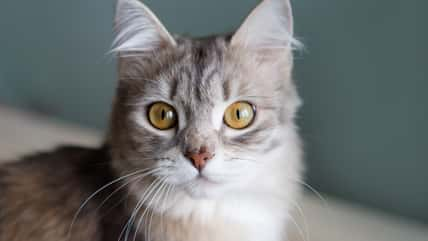Little Lizards In Costa Rica’s Rainforest Create Air Bubbles On Their Foreheads And Scuba-Dive To Stay Submerged Underwater For Long Periods Of Time

Reptiles are extraordinary creatures with diverse abilities. For example, tiny lizards in Costa Rica’s rainforest have developed a way to “scuba-dive” by creating air bubbles on their foreheads to breathe underwater, allowing them to stay submerged for long periods of time. This unusual behavior could help them hide from predators on land.
The first case of a semi-aquatic lizard known as a stream anole (Anolis oxylophus) breathing underwater was caught on camera in 2018. The footage showed the lizard using a bubble of stored oxygen that surrounded its snout.
The ability had never been seen in lizards before. Since then, at least 18 other species of anole have been found to form air bubbles, too.
Until now, scientists weren’t sure if the bubble enabled the lizards to stay underwater for a prolonged period of time or if it formed as a result of their water-repelling skin.
In a new study, a team of researchers tested almost 30 water anoles and discovered that those using air bubbles remained underwater 32 percent longer than anoles without bubbles. The extra time likely helps them escape predators.
“There are a lot of threats in their environment, and it makes sense that they would evolve a unique way of dealing with them using the resource—water—that they have available,” said Lindsey Swierk, a co-author of the study and an assistant research professor in biological sciences at Binghamton University in New York.
Most of the time, semi-aquatic water anoles sit on boulders near riverbanks in the forests of Costa Rica and Panama. These lizards grow up to eight inches long. When they feel threatened, they will jump into the water to escape. They can stay underwater for at least about 20 minutes, possibly even longer.
The anoles exhale to create a bubble that surrounds their head. The bubble stays in place because of the lizards’ water-repelling skin. The bubble expands and collapses as the anoles exhale and inhale.
The researchers suggest this redistributes the air on and inside an anole’s body, providing it with enough oxygen to make long dives.

Milan – stock.adobe.com – illustrative purposes only, not the actual anole
They tested this by collecting 28 water anoles from the Rio Java in Costa Rica. They applied a substance to the heads of 13 anoles to stop their skin from being water-repellant, causing the bubble to be unable to attach to their skin. Then, they compared the dive length and the ability to rebreathe bubbles in both groups of anoles.
On average, the anoles with no substance, also known as the control group, applied spent 67.5 seconds longer underwater than those with the substance. The longest recorded dive included in the analysis was 308 seconds, just over five minutes.
In the group with the substance applied, the longest recorded dive was 254 seconds, just over four minutes.
The results showed that semi-aquatic anoles can dive longer when they are allowed to rebreathe bubbles.
According to Swierk, the dive times may have been even longer if the experiment had been conducted in the wild instead of in tanks.
“The pressure to stay concealed from a real predator, which we didn’t use in our study, could nudge the control group’s dive times much longer,” said Swierk.
The study was published in the journal Biology Letters.
Sign up for Chip Chick’s newsletter and get stories like this delivered to your inbox.
More About:Animals





